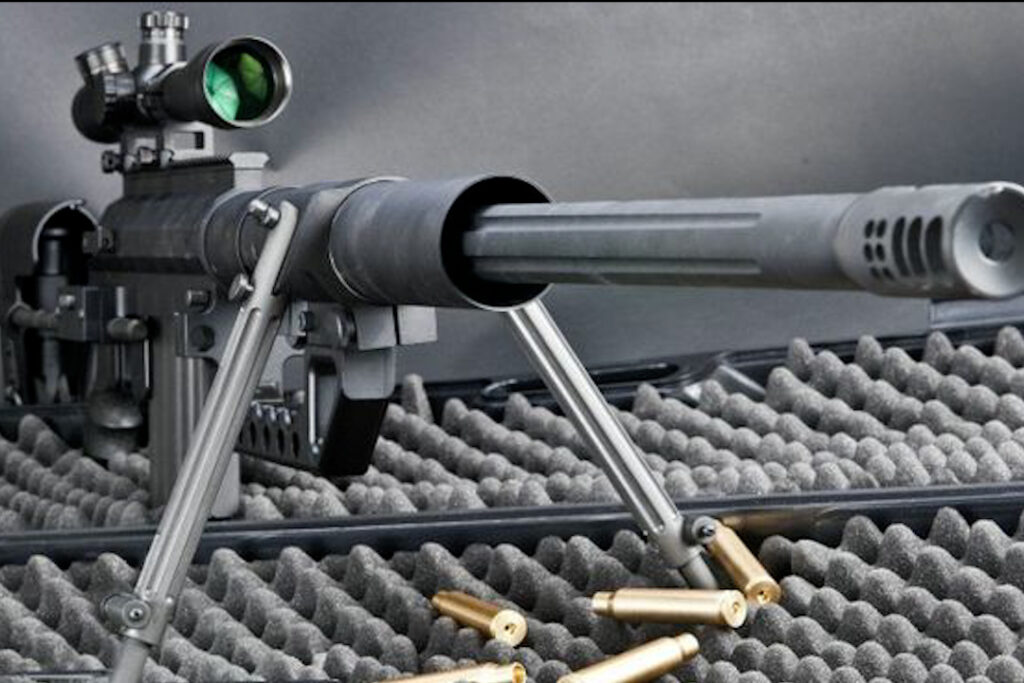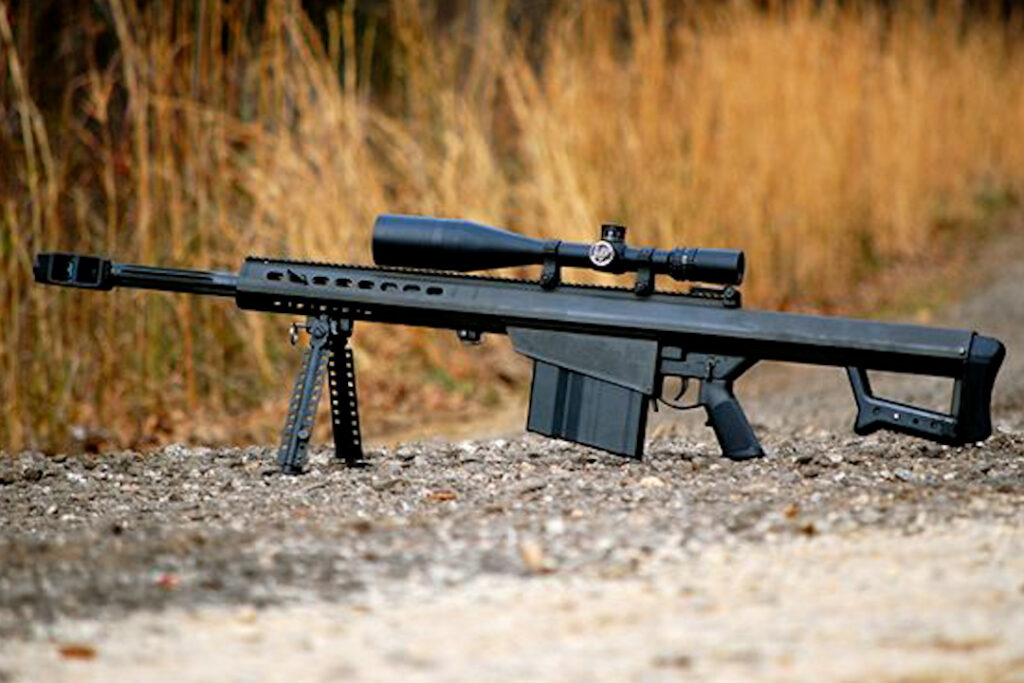Introduction
As an iconic product in the field of modern small arms, the Barrett M82 series rifles have been renowned since their inception for their formidable firepower, astonishing range, and unique tactical positioning. Developed by the American company Barrett Firearms Manufacturing, this anti-materiel rifle (AMR) not only redefined the boundaries of long-range combat but also secured a place in global military operations, law enforcement missions, and even popular culture. This article will delve into the legendary journey of this “King of Sniper Rifles” by exploring its development background, technical features, combat performance, and cultural impact.

1.Development Background: Filling a Tactical Gap
In the early 1980s, the U.S. military recognized the limitations of traditional sniper rifles when engaging high-value targets such as armored vehicles, radar stations, and ammunition depots. Although the 12.7mm (.50 BMG) cartridge possessed the capability to penetrate light armor, the market lacked a reliable semi-automatic weapon capable of firing such ammunition. This gap was keenly identified by Tennessee-based firearms designer Ronnie Barrett. A photographer and firearms enthusiast, Barrett leveraged his deep understanding of mechanical engineering to develop the M82 prototype in 1982. Its innovative recoil mitigation system and semi-automatic design made the operation of large-caliber ammunition significantly more efficient, establishing the technical benchmark for modern anti-materiel rifles.

2.Technical Innovations: Redefining Long-Range Lethality
The Barrett M82’s core advantages stem from its revolutionary engineering:
- Recoil Management System: Utilizing a short-recoil operation and hydraulic buffer, the M82 reduces the recoil of the .50 BMG cartridge to a manageable level, allowing shooters to fire continuously even in a prone position.
- Modular Design: Features like a detachable barrel, folding stock, and Picatinny rail system enable rapid adaptation to diverse combat environments.
- Ammunition Versatility: Beyond standard armor-piercing (AP) rounds, the M82 can fire specialized ammunition such as the Raufoss Mk 211 multipurpose explosive round, achieving a lethal radius against light armor targets exceeding 1,800 meters.
- Optical Systems: When paired with 10x or higher magnification scopes, the M82’s effective range extends beyond 2,000 meters, with upgraded models like the M82A1 capable of precise engagements at distances up to 2,500 meters.

3.Combat Performance: From Desert Storm to Counterterrorism
The 1991 Gulf War marked the M82’s first large-scale combat deployment. Hundreds of M82A1 rifles purchased by the U.S. Marine Corps were used to destroy Iraqi communication equipment, artillery positions, and aircraft sheltered in bunkers. Post-war reports indicated that a sniper team once disabled six armored personnel carriers at 1,600 meters using an M82, demonstrating its “multi-role” tactical value.
In the 21st century, the M82 further proved its irreplaceable anti-materiel capabilities during the wars in Afghanistan and Iraq. For instance, during the 2003 Battle of Baghdad, U.S. forces equipped with thermal imaging-enhanced M82 rifles conducted precise nighttime strikes against enemy snipers concealed within buildings. Additionally, its derivative model, the M107 (U.S. military designation), has been employed in counter-drone operations, protecting forward bases by shooting down small reconnaissance drones.

4.Controversies and Cultural Impact: A Symbol Beyond Warfare
While the M82 is highly regarded in military circles, its availability on the civilian market has sparked debate. Advocates argue it represents an extension of citizens’ right to self-defense, whereas critics fear its potential misuse in criminal activities. Nonetheless, the M82 has undeniably become a symbol of American firearms culture, frequently appearing in video games like Call of Duty and Battlefield, as well as films such as Shooter and The Hurt Locker, amplifying its global recognition.
From a technological perspective, the success of the M82 has spurred a global race to develop anti-materiel rifles, giving rise to models like Russia’s OSV-96 and China’s M99. Its design philosophy—”achieving strategic effects with individual weapons”—continues to influence the trajectory of modern small arms development.
Conclusion
The legend of the Barrett M82 is both a testament to engineering ingenuity and a microcosm of the evolution of modern warfare. From an armor-destroying tool in the desert to a hardcore icon on the silver screen, this rifle has spent over four decades proving that in the realm where precision and power converge, it remains the undisputed king.


